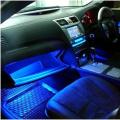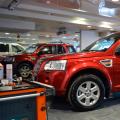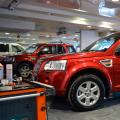Installing an alarm on a car is a rather difficult task and requires a qualified approach. When starting this procedure on your own, you should weigh all the risks in advance and soberly assess your own strengths. However, if you have the skills to work with an electrician, it is quite possible to cope with the task.
Before installing an alarm on a car, you need to clearly understand its functional saturation. As a rule, most car alarms have an engine blocking function, a shock sensor and the ability to be triggered when opening the car doors, as well as the trunk and hood.
Additionally, alarms can be equipped with various functions. In particular, there can be a two-way communication function, when the state of the car is displayed on the LCD display of the key fob, programmable functions, automated engine start on command from the key fob and other functions.
Before installing an alarm on a car, a security system must be purchased. If the car is parked away from home, or, it is best to give preference to models with feedback, since it will be impossible to hear the siren. Simple versions with a siren are suitable only if the car is parked near the house. You also need to remember that the more sensors an alarm has, the better car protected. A GPS module, as well as an immobilizer (the latter is often installed as standard on new cars), can be useful.
In order to independently install the alarm on the car (for example, toyota brands with gasoline power unit), as a car owner you will need the following set of tools:
- Phillips screwdriver, which you will need to remove the panels
- Key or head "10", which is also useful in the dismantling process
- Knife used for stripping wires
- Insulating tape
- Thin foam rubber for wrapping the security system unit
- Double sided tape
- Multimeter (you can take the simplest one, it will be enough)
- The alarm itself.
Before installing an alarm on a car, you need to decide on its location. The location should be chosen as hidden as possible, but there should be no sources of heat or moisture nearby, as well as generators of radio waves (cable antennas, radio transmitters in taxis, etc.).
As hidden place as possible with inconvenient access - perfect option for installation, since the hijacker will have to spend extra time dismantling the system. As a rule, the blocks are located in cavities behind the dashboard. When installing the alarm unit, it must be wrapped in foam rubber to avoid knocking and cracking when driving, leaving the connectors free.
Installing an alarm on a car begins with removing the dashboard and the lower steering column pad of the car. The alarm outputs are then connected to the vehicle dashboard. As a rule, this is the connection of both outputs to direction indicators or dimensions, an output to an indicator light open door car, control output of the running engine (connected to the tachometer wire, charging lamp or indicator emergency pressure oil). To connect, we are looking for board tracks with a +12 Volt contact, for which a multimeter is required. After completing the connection, the central locking relay is looked for (as a rule, it is located under dashboard). It is very easy to identify it - by the clicks that it makes when the central lock is activated.
Getting started with the direct installation of the alarm on the car, it makes sense to wrap the standard wires with black electrical tape, to heighten the resemblance to the standard car wiring. The connector is inserted into the security system unit and the wires are placed as discreetly as possible. After that, the wires are pulled into the engine compartment of the car. The wire is attached to the siren, which is fixed with an M6 bolt, and its second wire is fixed to ground.
After installing the siren, the engine blocking is mounted, for which the ignition switch wire is searched and blocked using the alarm engine blocking relay. Alarm sensors are mounted on this field. Installation of an alarm on a car with an autostart function is performed in the same way. The only thing that is required in this case is the installation of an additional wire to control the running engine, which turns off the starter after starting and attaches the starter control wire to the car's ignition lock connector.
Thus, as we can see, installing an alarm on a car is a very complicated procedure. Errors in this case can easily lead to damage to the car's wiring, false positives and other unpleasant consequences. For this reason, it is worth taking on work only when you really have confidence in your abilities and knowledge. If this is not the case, it is better to seek help from specialists. Moreover, the installation of security systems is quite inexpensive.
Sometimes it seems that it allows you to save money, but this is not always the case.
What to do battery charging light.
Because of what the new alternator belt whistles when starting.
Video about the correct installation of car alarms:
Title
Car alarm is an attribute that you cannot do without. When you leave your car under the entrance windows, it is very difficult to get rid of the annoying desire to run away to see if the car is still there. Any responsible driver knows this sensation. Therefore, very often thinking about buying a car, the future driver makes the choice of the car where it is offered from the factory standard alarm... As a rule, this anti-theft alarm is not very high quality, usually one-way, but it is its presence that can save the car from theft and give the coveted peace of mind to the owner.
What are the alarm options
Having used a lot and realizing that the standard alarm system does not meet the needs of the driver, as a rule, he thinks about replacing it with more best model... The car alarm can be different, so let's figure out what they are, and then everyone will choose for themselves the option that suits him best. Conditional in type, the entire car "signal" is divided into:
- Simple (one-sided).
- Complex (with feedback, in another way, two-sided).
A conventional car alarm, the one that we call simple and the one that is most often supplied as a standard alarm, is a set of sound and light alarms and a central lock. The set includes only one key fob with which you can disarm the car, arm it and open or close. All that such an anti-theft alarm can do is to loudly inform everyone around that someone wants to get this car for themselves. This option can be successfully used if the car is not expensive and is not in demand among hijackers, and always sleeps in the garage.
If the car is expensive and you got this option as a standard alarm, and it happens to leave the car in an uncrowded area near the entrance, then, of course, such a model will not be enough. Well, the car will “scream”, the sleeping owner will not even hear it, but everyone else will not care, and the hijacker will most likely successfully steal such a car. The solution in this situation would be a two-way anti-theft alarm. In terms of protection against theft, such an alarm on a car is more perfect. Consider a similar situation when a car is also parked at the entrance and they want to steal it.
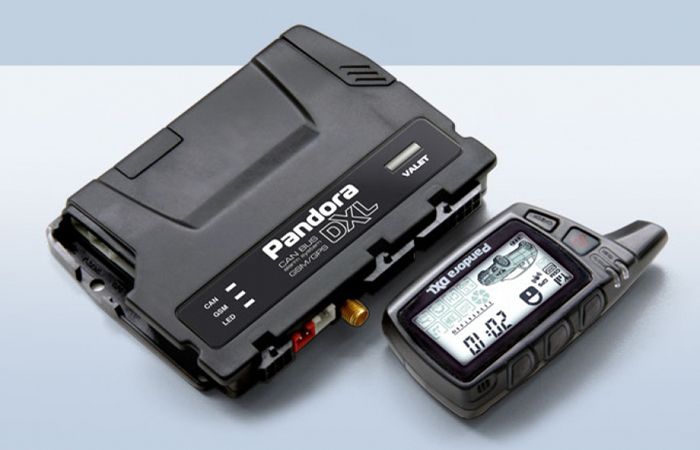
In addition to the fact that the car will start to swear loudly, its owner will immediately hear a signal from the two-way communication key fob. And, having seen this signal, there will always be time to reach the car and stop the theft. Next, let's pay attention to the security against computer theft.
The automotive industry is now directly fighting car thieves who come up with more and more sophisticated ways to hack cars. So, with the advent of the opportunity to open the car from the key fob, they came up with special devices that catch this signal and imitate it. Thus, the anti-theft alarm is deceived.
But a two-way car “signaling” with a double code easily solved this problem, and so decided that the car thieves are still puzzled. The thing is that such models are equipped with special deviceswhich will constantly change the signal with which the car opens and closes.
For example, at the moment when you close your car, there is a thief next to you who has caught the signal. But the code has already changed, and only the key fob in your pocket knows, and even after you open the car for them again, it will change again, and so on ad infinitum. It is impossible to pick it up. This car anti-theft alarm system is still practically unbreakable.
Self-installation of the alarm
Let's assume that you have selected and purchased a specific car alarm. The question arises: how to install it? Of course, at the station maintenance they will easily solve this issue, but how much money it will cost to solve it is another question. As a rule, it can cost up to 50% of the cost of the "signaling" itself. However, it is not so difficult to install an alarm on a car; it is quite possible for any driver to do it yourself and save a lot of money.
Usually, everything that is needed is immediately included in the delivery set and we only need a tool:
- Soldering iron.
- Insulating tape.
- Multimeter.
- Any comfortable pliers.
A multimeter is required to check the functionality of the vehicle's wiring. It should be noted that it is not recommended to use a probe (indicator, such a kind of screwdriver with a light bulb). Also, before starting all the operations, you need to disconnect the negative terminal from the battery to eliminate the possibility of a short circuit. If you do not remove the terminal, then you can accidentally short-circuit the wires, and the car wiring will completely burn out, it will be very difficult to replace it yourself and they will take a lot of money from you at the station, and the car will most likely not drive until the repair.
First, we will need to decide on the location of the main control unit. Recommended by many auto mechanics the best place for installation is an automobile steering column... The advantages of choosing this particular place can be considered the fact that all the wires for connection and ease of installation will be nearby. It also happens that the car alarm is sensitive to the temperature in the car, so you need to choose a place where there are no streams of warm air and there is nothing heating up. Next, the installation of all sensors follows. All of them should be placed inside the car, as they will not get wet here and will work as they should. Anti-theft alarm always has a shock sensor, it is recommended to place it closer to the center of the car so that it perceives shocks and touches from all sides of the car at once.
Also, almost any car alarm has an LED indicator that notifies everyone who wants to look at the car about the presence of protection. All wires must be connected well to prevent functional impairment. If some wiring falls off, the work of the entire "signaling" may be disrupted. It is also worth paying attention to masking the main control unit. It is the car's steering column that is immediately examined by an experienced hijacker for its presence. It was good to make it less visible or hide it behind something.
After all the components have been installed, it is advisable to test all the work. If the alarm on the car gave false alarms, then this means that the sensors were too sensitively tuned, it is advisable to configure them so that later not to twitch over trifles.
You also need to check how the key fob works, how the car is disarmed and how it is disarmed.
It should be understood that car alarms can become not only a protection against thieves, but also a deterrent. The thief will look at the blinking LED and think: "why should I contact a car with a car alarm, I'll go find a simpler car." And just the very fact of what kind of convenience the car “signaling” creates already suggests that it is desirable to install it. The ability to open the trunk and doors without a key, restful sleep at night and the absence of fear for the car are indisputable advantages.
To install an alarm on a car with your own hands, you need to have at least the slightest idea of \u200b\u200bhow such electrical equipment works. More recently, only experienced auto electricians could do such an installation. But now in the public domain there is a lot of information about the correct installation of devices.
Anyone can explore step by step guide and do all the work yourself. Even in the operating instructions for the alarm, all the manipulations that are performed on the car are described in detail. There you will even find descriptions of functions that you can program yourself. Do-it-yourself installation of the Sheriff alarm on a car is no different from the installation of any other anti-theft system.
Benefits of car alarm
Regardless of whether you have a new car or with high mileage, it can be a tasty morsel for hijackers. If you purchase new car in a car dealership, then, most likely, the dealer will offer you to install an alarm. Moreover, they may even threaten that in case of unauthorized installation of the security system, the car will be removed from the warranty.
But you yourself choose where and what kind of security system you will install. Such actions of dealers are illegal, they are simply trying to earn the maximum. In the event that the alarm installer gives a guarantee for his work, he confirms that the installation has been completed in accordance with all requirements. And deny warranty service a car dealership can only if it is proven that the car broke down precisely because of an illiterate installation.
Self-installation
There are several advantages of DIY installation. VAZ of almost all models are not very complex cars in design. They can be easily equipped with any type of security system. You will get the following benefits:
- Save a lot of money. If you go to a workshop, the auto electrician will charge you a round sum - with this money you can buy a new alarm, and sometimes even two.
- Of course, you will receive moral satisfaction from the work done. The security system is complex equipment that not everyone can install and properly configure. If you do the installation yourself, you will also gain useful experience in installing security systems.
- If in car dealerships and workshops all controls, as well as sensors, are installed in the same places on all machines, without exception, then with self-assembly you can choose any arrangement of components.

These are just the main advantages of self-assembly. Each motorist can bring some of his own characteristics. For example, add one or two additional sensors to the system and thereby increase the degree of security. If you wish, you can even change the standard bell sound required to alert you of an attempt to enter the car.
Varieties and configurations of security alarms
Before installation, it is necessary to choose the most suitable security system. First of all, decide on the manufacturer, then on the model. From the number of security and service functions the cost of the device will also depend. To summarize, all security complexes can be divided into three subgroups:
- The simplest car alarms, which have an anti-grabber, anti-scanner, several outputs for control power mechanisms, electric locks, inputs for connecting sensors.
- Alarms with feedback are equipped with a large number of sensors, and also allow you to issue an alert to the key fob when trying to enter the car.
- Automotive gSM alarm... The most advanced type of devices, since they can dial the number specified in the settings in case of hacking. In addition, it is possible to track the position of the vehicle using geolocation.
The simplest car alarms
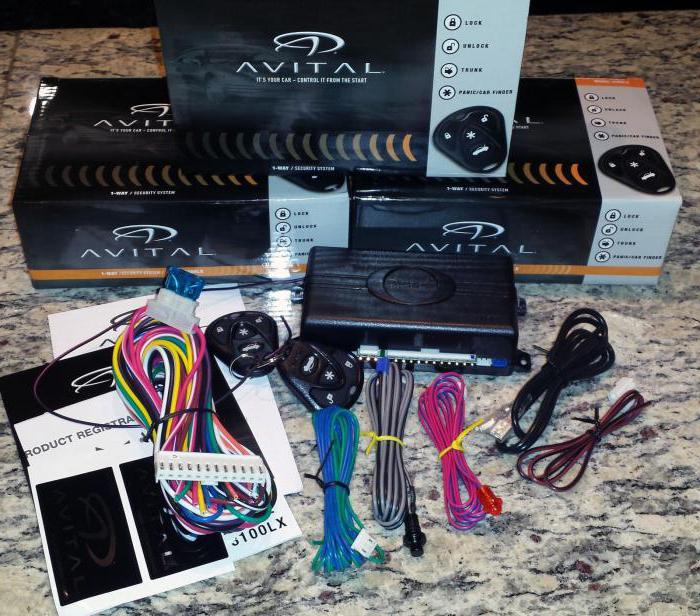
They are also called "openers", as they have very few functions:
- Arming and disarming.
- Opening and closing all doors.
- When an attempt is made to enter the car, the panic mode is activated, sound and light notification occurs.
- In case of unauthorized access, engine start is blocked.
Among the disadvantages of such security devices one can distinguish one basic - a very simple protocol over which radio commands are transmitted. Therefore, installing an alarm on a car with your own hands will add only one useful function - remote opening of doors and trunk. Such devices are one-sided, and the range does not exceed several tens of meters. Among the advantages, only low cost can be distinguished.
Alarm equipped with feedback
If you need to install car alarm with auto start, then you need to use exactly this type of device. These are the most modern designs, they have a lot of functions, a more advanced data transfer protocol. This means that when using this car alarm, you can not only control, but also receive information from the car.
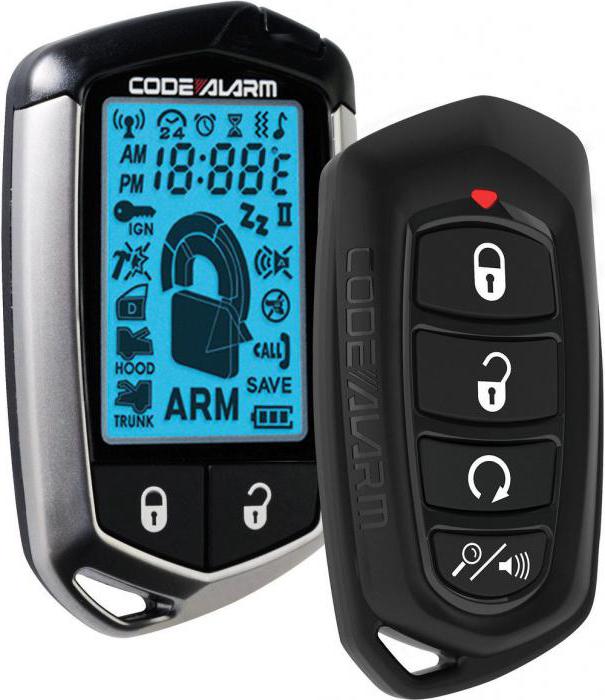
For example, a driver can receive information on his key fob whether the car is armed or whether there have been any attempts to break-in. Car alarms also have the following capabilities:
- Remote engine start for winter warm-up.
- Installing a turbo timer. The engine continues to run at idlingso that the turbine compressor cools down after arming.
- The inclusion of various modes of illumination of the interior and the car body.
- Electric closers for windows or sunroof. When arming, if windows or a hatch were opened, they will automatically close.
The range of this type of device is several hundred meters. The cost is at least twice as high as that of simple security systems.
GSM car alarm
The main unit has a GSM module and GPS geolocation. The signals from these two modules go to a microcontroller, which performs the functions of a computer that collects and processes information. The GSM module is similar in principle to a simple cell phone. It receives and transmits signals in the area of \u200b\u200bthe mobile network. The GPS module with the help of a satellite allows you to determine the position of the car at a particular time.
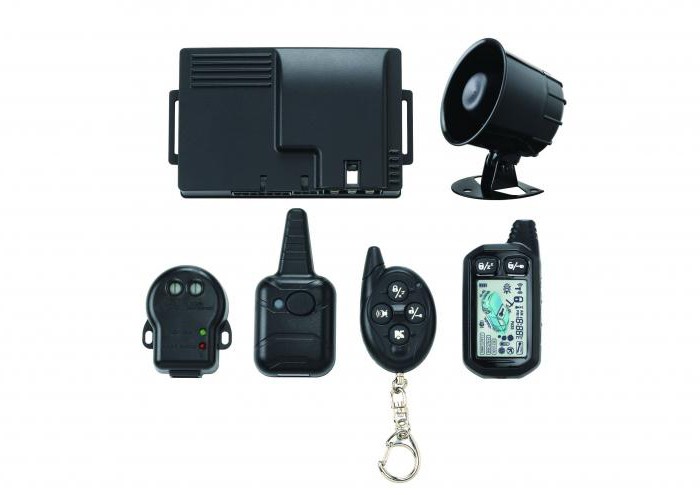
Do-it-yourself alarm installation on a car is performed according to the standard scheme. It is the same for both simple systems and more complex ones. With the help of the controller, all information received from the sensors of the security system is processed, after which the parameters of the control signals are calculated. The driver can control his car using SMS and voice, as well as through a browser on the Internet.
Tools and materials for installation
Before you install the alarm on the car yourself, you need to collect the following tools:
- Multimeter - with its help, the voltage is measured, the continuity of the wiring is carried out.
- A set of flat and Phillips screwdrivers.
- Socket heads and ratchet.
- Electric soldering iron.
- Scissors, wire cutters.
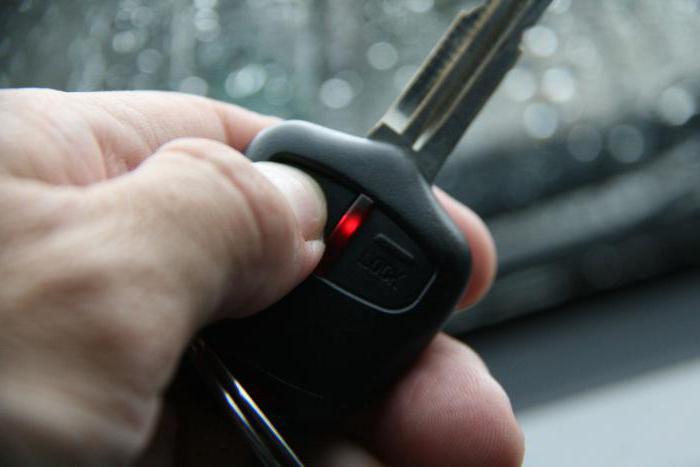
You will also need the following materials:
- Double-sided tape.
- Insulation tape and heat shrink.
- Plastic cable ties (preferably black).
Need to have multiple wires on hand different colorto add them as needed while connecting the device.
Installation
DIY step-by-step instructions for installing an alarm:
- Decide on the installation site for the central unit. The further you hide it, the more likely it is that when attempting to hack, the attacker will not be able to disable the security. It is advisable to place the central unit deep under the dashboard, there are enough free niches.
- Mark the position of the sensors in the vehicle interior. The shock sensor must be installed on the bulkhead of the engine compartment.
- If the vehicle does not have limit switches, install them. In this case security system will be able to record the opening of doors, hood, trunk.
- Decide how the launch lock will be carried out. For carburetor cars it is best to disconnect power to the switch or short circuit the Hall sensor to ground. On injection vehicles, you can open the power supply circuits of the fuel pump, injectors, electronic unit management.
- When finished, connect the unit to on-board network through the fuse.

According to this scheme, a car alarm with auto start is installed. The installation instructions supplied with the device contain full description designs, and most importantly - detailed manual for programming all functions.
A car of any brand must be reliably protected from possible theft or unauthorized entry in order to steal the owner's personal belongings from the passenger compartment. Installing an alarm on a car will create an appropriate level of security for personal vehicle... Today there are many different security kits. Most often they use security equipment of well-known brands, for example, StarLine, Mongoose, Tomahawk, Alligator Sheriff, Pantera, Scher-Khan.
Installing an alarm on a car on your own has recently become a hot topic. In conjunction with the alarm system, there is an instruction for the implementation of installation and adjustment work.
Modern cars, including domestic production, are completed with a security line. Such a security line, as a rule, has a minimum functional set. However, not always standard functions sufficient to provide effective vehicle protection. Therefore, motorists often ask themselves how to install the alarm system themselves.
What types of car alarm systems are there?
Installing car alarms always starts with choosing the most suitable equipment. Before purchasing a ready-made kit, you need to determine the type of installed system. To date, the following main types of alarms are distinguished:
- One-way communication;
- With feedback;
- With two-way communication.
Installation of car alarms with one-way communication is the simplest and at the same time reliable. With this kit, you can lock the engine, control the central lock, as well as the state of the hood and luggage compartment... Such complexes are usually mounted on inexpensive cars... Signaling systems with feedback allow you to control the main subsystems of the machine remotely (distance up to 1 km). The functional set is generally similar to the one-way signaling options.
The video shows an example of installing an alarm:
Installation of car alarms with two-way communication will allow you to start the engine remotely. The gearbox used (manual or automatic) does not affect the operation of the system. The cost of this type of security line is higher than that of the two previous complexes.
How to calculate the cost of car alarm installation?
Installation of car alarms can be carried out independently or by qualified specialists. In the case of installation of the signaling complex by specialized service companies, the cost of the work performed is set taking into account the following factors:
- The type of signaling device (for example, installing a one-way alarm is much cheaper than installing a system with an auto start);
- Availability additional functions in system;
- The need to install an additional package of options (for example, turbo timer mode, mirror control, etc.).
The price of installation work does not depend on the value of the car or its brand. Car alarm installation includes the following steps:
- Connecting the system to the control unit;
- Configuring installed sensors;
- Connection and connection of door end elements for transmitting a warning signal about the opening of any door, including the hood or luggage compartment;
- Setting the engine blocking function;
- Siren connection.
As practice shows, the installation and adjustment work takes no more than 5 hours. It is almost impossible to determine the exact cost of installation work, since a number of the above factors affect the price. Any specialized company offers to purchase a set of equipment and at the same time install an alarm on a car. In this case, the price is generalized, that is, it includes the cost of both accessories and installation and adjustment work. Average cost of car alarm installation by Russian Federation is given in the table.
What set of tools is needed when performing installation work on your own?
In order to install the car alarm on your own, you first need to carefully study the operating instructions. The instructions that come with the car alarm describe the procedure for performing installation, setting and starting work. To carry out installation actions, you will need a certain set of tools:
- Electronic multimeter (used to measure the conductivity of connecting cable lines);
- Additional cable (since the supplied cable line may not be long enough);
- Foam pad (for packing the central control unit);
- Insulating tape;
- Double sided tape;
- Socket wrench;
- Screwdrivers of various diameters;
The video shows how to make a car alarm with your own hands:
How to correctly determine the location of the signaling components?
Installation of car alarms begins with the design stage and the location of the system components. The central unit is installed behind the dashboard. Previously, it is wrapped with a foam rubber pad and fixed. The unit must be located inside the car in a place hidden from unauthorized persons. It is not recommended to locate the central block mechanism near moving parts.
When installing car alarms, you need to pay attention to a number of aspects:
- In order to avoid kinks and subsequent closure (rupture) of the connecting wires at the door-body section, it is necessary to use rubber tubes or bushings;
- Electrical wiring must be in a dry place;
- Fastening and direction of connecting cables is carried out using special plastic clamps;
- The sensors are positioned according to the determining influencing factor;
- The LED indicator is best placed on the dashboard in the passenger compartment.
Stages of self-assembly car alarms
Installing a car alarm on your own begins with determining the power supply to the central unit. The body of the car is a kind of "minus". The "plus" can be the ignition switch or the battery itself.
Next, the light signaling is connected. It can be connected to the turn signals or the low beam headlights. It is important to remember that you cannot connect it directly to the wire to the main headlights. The light element is connected to the light control relay.
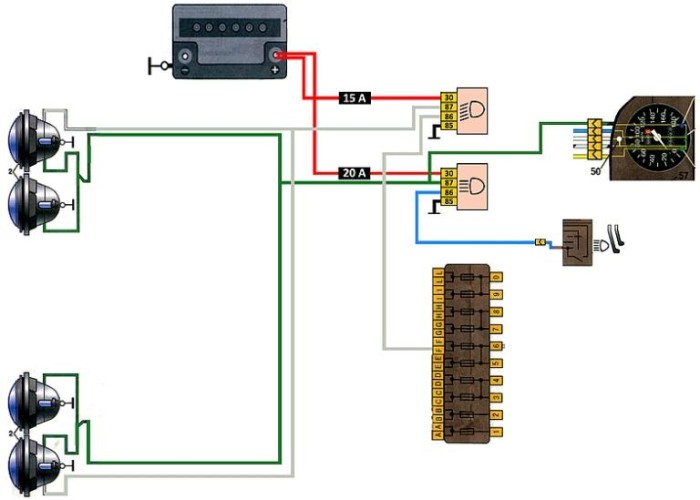
After connecting the light signaling, the system is connected to the central lock. The connection diagram can be varied depending on the type of alarm system and the car brand. For correct installation, you need to study the instructions and the electrical diagram of the machine. When connecting the central unit and the lock, it is necessary to calculate the total current strength of the locking devices and check its relationship with permissible load in the control unit.
After connecting the central lock, the end elements of the trunk and hood are connected to the alarm, and the door opening contacts are also connected.
Then the operability of the entire complex is checked, and the system is set up and, if necessary, programmed. The classic car alarm connection diagram looks like this.
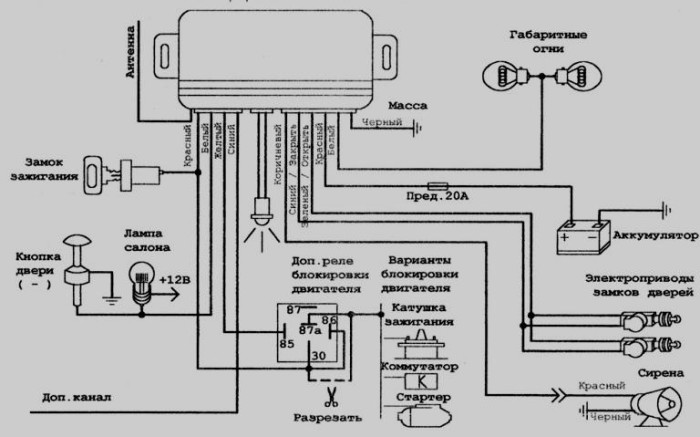
Currently, the car alarm for many is not only a means of protecting the car from theft and hacking, but also a device used for the comfortable operation of the car. (opening and closing doors, windows, trunk, turning off the light in the cabin, etc.) In this article I would not like to focus on how a car is stolen, what methods and methods are used in this case, from bricks to highly intelligent equipment.
I would not like to talk about non-standard solutions when connecting an alarm, in order to prevent unwanted situations, at the beginning of this article, the goal was to combine and unify all the knowledge on connecting an alarm in a car according to a standard scheme, to facilitate the installation and maintenance of security units in your cars, and not bring out a panacea against theft.
1.1 Standard of various alarm manufacturers
Unfortunately, after studying a number of schemes for connecting alarms in a car of various alarm manufacturers (Mongoose, Alligator Sheriff, Tomahawk, Pantera, StarLine, Scher-Khan, etc.), I came to the conclusion that uniform unification for alarms ( security complexes) no... That is, pins with the same marking and color from alarms from different manufacturers have different functions during operation. Apparently this refers to the "battles" on the market of manufacturers for their own standards that have not yet ended. The assumption that this discrepancy is possible due to safety is swept aside due to the fact that the alarm is set inside the cabin and in hard to reach place and this is its priority barrier from burglars, and not the use of wires different colors for the same functions.
In addition, another well-known fact should be noted that burglars never try to figure out what kind of alarm is installed and how it works. The most important thing is to neutralize it, turn it off and then simply force the car to start, without restoring the standard wiring and functions, but using duplicate methods (bypass wires, etc., this is much easier)
Once again, I repeat that the article is still aimed at ordinary people who want to service the car alarm on their own (installation and operation), therefore, further, according to the purpose of the article, the basic techniques for installing and installing alarm components will be given. The appendix will contain an archive of diagrams for connecting car alarms (this archive will, if possible, be constantly updated, thanks in advance to active readers who will send a wiring diagram for connecting an alarm and a programming table that is not available in the archive for posting on the site).
1.2 Methods of wiring and placing the wire in the door-body opening when installing the alarm
When the solenoids are installed in the doors and the wiring is pulled to them, the most problematic area from the alarm is the place of constant bending of the wires, namely in the opening of the doors hanging from the body.
On domestic-made machines, the most suitable option is with the use of rubber pass-through tubes, which are fixed in the rack with one end, and the other end freely passes through the hole in the door. (Figure 1A) In this case, the wires are reliably protected from external influences, the bending radius of the wires passing between the rack and the door is at least 100 mm, which ensures a long-term reliable operation wires without breaks and breaks. A section of wire inside the car door is left with a margin and is attached. Currently on the market you can find different kinds bushings. Italian-made bushings are widespread. Unfortunately, they have one significant drawback - they are made of plastic. The pipes have good oil and petrol resistance, but at temperatures below -30 degrees they become brittle. In our conditions, for the installation of wiring from the alarm, it is better to use domestic-made bushings made of frost-resistant rubber.
The S-loop method is used quite often. (Figure 1B) This method drills misaligned holes in the pillar and in the car door. The wires are passed in such a way that an S-shaped loop is formed. Variations on this topic are quite diverse and depend on the level of solidity of the company and the professionalism of the installers. In the simplest case, bare wires are passed through the holes. It is good if rubber grommets are inserted into the holes, and the wires are enclosed with a PVC tube or wrapped with electrical tape. In more reputable firms, wires are passed in corrugated rubber tubes, which are sometimes completed with Taiwanese-made wires. The disadvantages of this method include the fact that the wires work simultaneously for bending and twisting. If this method is used on imported machines, where the gap between the rack and the door is large enough, this is not important, since the bending radius of the wires in this case has acceptable values, and the twisting angle can be generally neglected. On machines of domestic production this method it is better not to use, since the gap between the rack and the door has minimum dimensions, and when the door is closed, the wires are bent almost at right angles. It's not hard to imagine what will happen to the wires after several hundred doors are closed. In addition, Taiwan-made corrugated rubber tubes do not stand up to criticism for the quality of the rubber. It is clearly designed for the mild Taiwanese climate and cannot stand the test of our frosts.
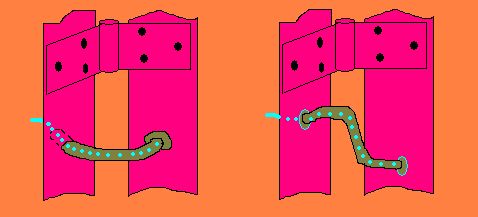
Figure 1A Figure 1B
Methods for wiring the body door connector when installing the alarm.
1.3 Connection to the central lock and installation of alarm solenoids in the car doors.
When installing the solenoids into the cavity of the doors, the most correct solution would be to install it as far as possible, directly from the pull of the button for opening and closing the doors, since the longest pull will compensate for the angular error of the solenoid relative to the button for opening and closing the doors. 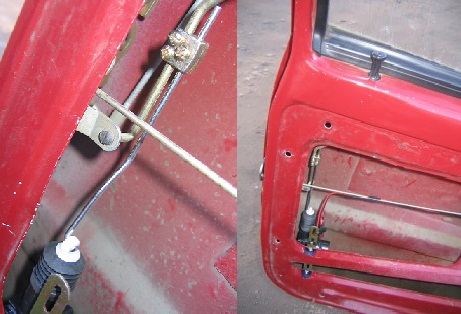
Installation of solenoids and their connection, such problems go further and further away from us. Now the question of how to connect to the central lock in the car is perhaps more relevant.
So, using the example of connecting an alarm to the central lock Toyota Corolla, lineup 2006-2012 year of release, consider this case.
First of all, you need to figure out the colors of the wires responsible for certain commands. The best way to do this is to use a multimeter. Removing the handle with the central locking control buttons from the upholstery driver's door... See the article "Removing the Toyota Corolla door handle" The photo below shows a plug with already calculated central lock control contacts.
The algorithm for finding the contacts is simple, we switch the multimeter to the resistance measurement mode, connect the ground of the device to one of the contacts, press, for example, the close button and look for zero resistance. After that, release the button if the resistance becomes equal to infinity, this is our option, if not, then we continue the search, going through various combinations. We also find the second contact.
As a result, it turned out that the brown wire is common, the yellow and blue output control signal. In this case, it should be noted that the brown wire is negative, that is, the central lock is controlled by a "negative" control signal.

Further, from the side of the driver's door, remove the threshold and the dashboard cover. The mounting block opens in front of us, it is in it that we connect to the plus to power the alarm (the thickest wire is the power wire mounting block)
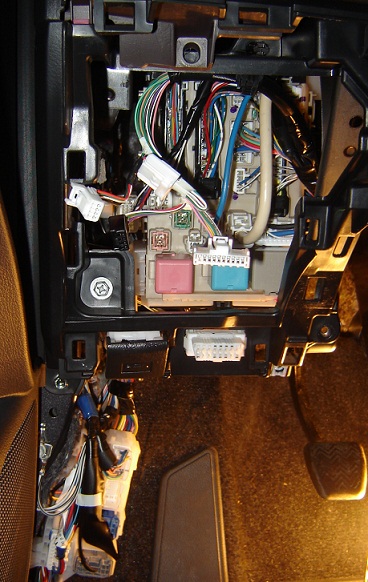
An example of connecting the alarm power supply is shown in the photo below. The alarm power wire is passed through the plug and fixed with tape, then the plug is installed in its place.
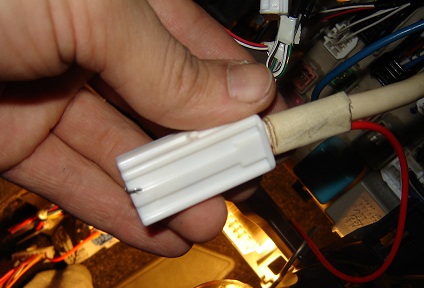
Below, at the threshold, from the bundle of wires leaving the doors, we find our yellow and blue wire, which we previously identified from the central locking control buttons on the door handle. We connect to them using clips (in the photo in red) the alarm wires for locking and opening the doors. Also, to confirm our research, you can see the wiring diagram for unlocking the doors and lighting the interior of the Toyota Corolla on it, the yellow wire - opening, blue - for some reason is not shown in the conditional block of the front door I5.
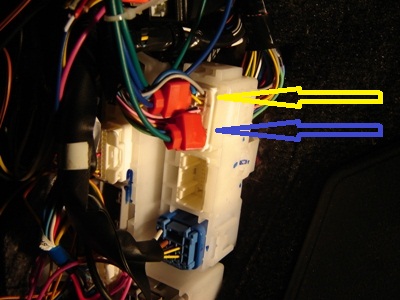
We connect the minus wire of the alarm to the body, in principle, at this stage, the stage of connecting the alarm to the central lock is completed.
1.4 Installation and operation of limit switches (contacts) during the installation of the alarm.
Electricity in a car is increasingly being transformed into electronics. The use of standard interior lighting switches is becoming more and more problematic. If earlier the circuit of limit switches for doors was carried out according to the scheme when the power supply of the interior lighting lamp was through a fuse and a limit switch, while the use of these limit switches for signaling ensured a clear alarm triggering when connected to any of the contacts, now, as a rule, an indication unit also participates in this connection scheme ... When using this display unit, connecting to one of the limit switches entails the following possible problems:
- influence on the display unit through the internal resistance of the alarm;
- influence on the signaling through the internal resistance of the display unit;
- the impossibility of connecting to only one contact, from one door, and not to all of each door (due to the problems described above);
- the use of diodes to prevent the above problems.
As a consequence, the most optimal solution is the following:
- connection to the interior lighting through the interior lighting shade. The advantage of such a connection is the only connection for alarm signaling from any of the doors;
- connection at the point of door contacts, but using diodes.
1.5 Pulling wires in the car and duplicating wires on the alarm terminals.
It's no secret that when installing the alarm, it is better to pull the wiring in closed, dry and protected places of the body. It is best to use plastic clips to secure and guide the wiring (Figure 3). 
Figure 3 (Clamps for fastening wires when installing an alarm in a car)
1.6 Connecting an external indication of an alarm in the car.
In all alarms I meet, the light indication of arming and disarming is carried out through the direction indicators. In this case, two wires are used on the right and left side with two diodes to prevent the sides from closing through the alarm. The most rational for light indication, I consider the use of dimensions, they have comparable power consumption compared to direction indicators, requires only one wire connection without the use of diodes.
1.7 Connecting the trunk opening function via an additional channel. Using an additional channel (CH2)
Currently, almost all signaling on the market support the second channel. Using this channel for signaling, you can connect to it any electronic device triggered by an impulse (for example, opening the trunk with a solenoid). By my own example, I can say that this is very convenient function... There is no need to climb into the salon every time in order to open the trunk, especially since the connection is not so difficult (Figure 4). As a rule, the signaling unit gives out a minus pulse (apparently due to safety), and the solenoid is triggered by a plus pulse in the standard wiring, in this case you cannot do without additional relay... The pulse current usually ranges from 300-500 mA, so this is also an obstacle to connecting the solenoid without an additional relay.
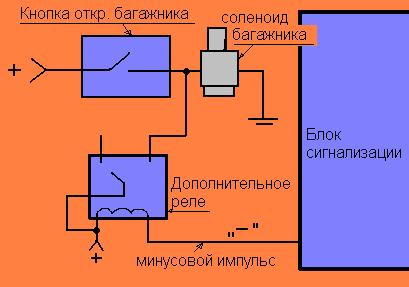
Figure 4 Connecting the function of opening the trunk from the alarm.
Examples of mechanical installation electric lock trunk for some cars, with subsequent control from the alarm or from the button, can be found in the article "Electric trunk lock".
1.8 Wiring diagrams for connecting the alarm in the car.
1.8.1 Alarm connection diagrams - manufacturer Alligator (Alligator)
Alligator LX-440 Installation Manual
Alligator LX-440 User Manual

